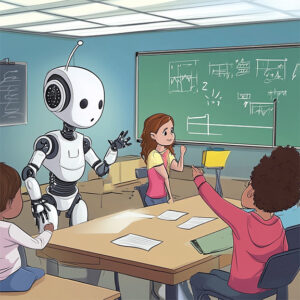 The Supreme Court ruled 6 to 3 that state officials can accept gratuities as rewards for their official actions. To be fair, there are disparities in punishments that should be addressed. A federal official can receive up to fifteen years for accepting a bribe, but the punishments cap at two years for accepting gratuities. The statute the ruling is about applies only to state officials and imposes a 10-year sentence. While inconsistency in punishment is a hallmark of the American legal system, from a moral standpoint sentences should be consistent (and fair). As such, it would be reasonable to make the punishments for accepting gratuities for federal and state officials the same. Unless, of course, there is a relevant difference that would warrant such a disparity. However, the court ruling was not about addressing this inconsistency. Instead, critics claim that the ruling has legalized corruption. To be fair, the ruling seems to have the intent of allowing state and local governments to define what is acceptable as a gratuity. That is, the intent seems to be to allow the people who will receive gratuities to decide what they are allowed to receive.
The Supreme Court ruled 6 to 3 that state officials can accept gratuities as rewards for their official actions. To be fair, there are disparities in punishments that should be addressed. A federal official can receive up to fifteen years for accepting a bribe, but the punishments cap at two years for accepting gratuities. The statute the ruling is about applies only to state officials and imposes a 10-year sentence. While inconsistency in punishment is a hallmark of the American legal system, from a moral standpoint sentences should be consistent (and fair). As such, it would be reasonable to make the punishments for accepting gratuities for federal and state officials the same. Unless, of course, there is a relevant difference that would warrant such a disparity. However, the court ruling was not about addressing this inconsistency. Instead, critics claim that the ruling has legalized corruption. To be fair, the ruling seems to have the intent of allowing state and local governments to define what is acceptable as a gratuity. That is, the intent seems to be to allow the people who will receive gratuities to decide what they are allowed to receive.
The ruling rests on a philosophical discussion of the difference between bribery (always corrupt) and gratuities (sometimes corrupt). Justice Brett Kavanaugh wrote that “bribes are payments made or agreed to before an official act in order to influence the official with respect to that future official act.” Gratuities “are typically payments made to an official after an official act as a token of appreciation.” Taking the terms strictly, Kavanaugh seems to be right: a bribe is offered to influence an action, a gratuity is given to reward an action. For example, one might bribe the maître de to get a table and then give the server a gratuity to reward them for good service. Naturally, the payment of the bribe can take place after the action is completed, since the agreement can be made with the payment promised in the future. This would seem to allow for cases claimed to be gratuities to be bribes and this would require showing that an agreement was made that influenced the future action.
One interesting consideration is the likely possibility of iterated gratuity in which an official accepts gratuities for their actions and thus sends a clear signal that they will, in the future, act in ways that will be rewarded by gratuities. Imagine that an official who sees to it that a business gets a lucrative contract to provide school lunches gets a $12,000 gratuity from the business to express their appreciation after the fact. The official now knows they will be rewarded for helping the business. Imagine they then see to it that the business gets a contract providing prison food and is rewarded with a gratuity. Now the business knows the official is amenable to being influenced by gratuities. Strictly speaking, there would be no bribery—it would be analogous to how we train dogs by rewarding them for doing what we want. But it would create a situation indistinguishable from bribery because it would be silent bribery. Everyone would know how the system worked, and no one would need to say anything. But it might be objected that gratuities can just be rewards and not corruption.
Kavanaugh makes this argument by using what he takes to be innocuous examples. He asks, “could students take their college professor out to Chipotle for an end-of-term celebration? And if so, would it somehow become criminal to take the professor for a steak dinner? Or to treat her to a Hoosiers game?” While he did consider that some gratuities could be “problematic” he provides obviously innocuous examples, such as tipping a mail carrier, a thank you gift basket given to a teacher at the end of the school year, a college dean giving a sweatshirt to a city council member who speaks at a school event. He argues that these examples suggest that “gratuities after the official act are not the same as bribes before the official act,” adding that unlike gratuities, “bribes can corrupt the official act — meaning that the official takes the act for private gain, not for the public good.” Let us consider both these examples and the general argument.
It is interesting that the justice picked the example of a mail carrier, since the USPS has a strict policy about gifts to postal employees. They can receive a gift, but it must be $20 or less per occasion and no more than $50 in a single year. This is obviously much stricter than the rules governing the Supreme Court, which are effectively none. That there is such a limit on postal employees does suggest that there are concerns about allowing large gratuities. And, of course, there is the practical fact that a postal carrier is rather limited in what sort of corruption they can engage in in their official role.
Assuming the local laws allow it, the sweatshirt gift seems morally fine—it is unlikely that an official would engage in corrupt deeds for the sake of a sweatshirt. Also, giving out cheap college merchandise to speakers or people at events is a normal, non-corrupt practice.
The gift basket is somewhat more problematic, depending on how strict the school policies and local laws are. On the one hand, there is almost certainly no intention of corruption. On the other hand, accepting such gifts from the public does signal that one is willing to accept gifts and could open the door to corruption. But I teach at the college level, so I am not that familiar with the rules and ethics at the K-12 level. Which takes us to his professor examples.
So, would it be criminal for students to take their professor out to dinner for an end of term celebration or give them tickets to an event? I infer that the professor in question is a government employee, so the answer would partially depend on the local laws. Distinct from the laws, there are also the matters of university policies (violating these could get the professor fired for cause) and ethical concerns.
Ethically, a professor should not accept dinner or tickets from students, even at the end of the semester. This can create the impression of impropriety and other students might hear of this and think that the professor either expects or will reward students if they think they will receive such gifts. It is especially problematic if the students will take future classes with the professor, since such gifts could influence the professor’s behavior in those classes. Of course, my moral view is that a professor should not profit from their position (beyond their salary and appropriate compensation), even in small ways. The Supreme Court and public officials, who have far more power than us professors, should also follow this moral practice lest they fall into corruption. Well, more corruption.
In terms of policy, schools vary in their guidance. Based on what colleagues around the nation have said, some schools have no clear guidance about small gifts and other schools have strict and precise guidelines. Anecdotally, most schools would frown on students taking professors out to dinner or gifting them tickets. Smaller gifts, like a $16 reusable bag, might be allowed—to use a random example.
My university has a clear policy about gifts, and we are all required to complete ethics training about gifts every year. The short version is that as a faculty member I must not solicit or accept gifts with the understanding that the gift was given to influence or gain a favorable action or decision from me in my official capacity. Given that I understand that a gratuity given today for past behavior can be aimed at influencing future behavior, I take this as forbidding me from accepting any gifts that might have this nature. For example, I cannot accept any gifts from students since they might be in a future class and the gift might be intended to influence my future behavior.
We are also subject to disclosing outside employment, foreign influence and so on. It is interesting to compare the strict limits I operate under as a professor at a state school to the lack of limits enjoyed by the Supreme Court. But I suppose they are just trying to share the wealth by expanding opportunities for officials to profit from their positions through gratuities. Now to the general argument.
Kavanaugh claims that “gratuities after the official act are not the same as bribes before the official act” and that unlike gratuities, “bribes can corrupt the official act — meaning that the official takes the act for private gain, not for the public good.” So, his argument is that bribes can corrupt since they occur before the act, but gratuities cannot since they take place after the act. Hence, a gratuity cannot corrupt.
In an idealized situation, Kavanaugh’s reasoning would hold. If an official acted with no knowledge or beliefs about how those they benefited would respond and were thus surprised and amazed when those they benefited gave them a gift for acting to their advantage, then there would be no corruption. The official could not have been influenced by a gift they had no idea they might receive.
In reality, officials would be aware that a reward would be forthcoming if they act in certain ways, especially if they (as Clarence Thomas is alleged to have done) regularly receive gratuities as they act in ways that benefit those giving them the gifts. To think otherwise would be to ignore the plain facts or to infer that officials have no conception of the actual world. While it might be hard to prove that a one-time gratuity is a payoff of desired behavior, reiterated gratuities would clearly be bribes. I do not need to tell a dog that he will get a treat if he does what I want, giving him treats when he does what I want takes care of bribing him. And the Supreme Court has legalized giving treats.
In terms of why this is bad, one obvious reason is that it makes America even more of an oligarchy: people with money seem even more free to simply buy the results they want. Unless you are one of these people, the officials will most likely not be acting in your interest. The second problem is that this could lead to another standard outcome of corruption: it will be more likely that you will have to give gifts to officials to get things done; that is what happens when gifts to officials are legal. Going back to the professor example, if I could and did accept dinners and tickets from students and they saw that students did well in my classes, students would keep giving me dinners and tickets. After all, even though I said nothing, they would know that I expected such gifts and thus my classes would become corrupted. Which is why I, unlike certain Justices, do not accept gifts.
 While assessment is embedded into the body of education, when it first appeared I thought it would be another fading academic. When it first appeared, a modified version of the classic insult against teachers sprung to mind: “those who can do; those who can’t do teach; those who can’t teach assess.” In those early days, most professors saw assessment as a scam: assessment “experts” getting well-paying positions or consulting gigs and then dumping the tedious work on professors. Wily professors responded by making up assessment data and found no difference between the effectiveness of their fictional data and real data. This was because they were both ineffective. I, like many professors, found myself in brave new world of assessment.
While assessment is embedded into the body of education, when it first appeared I thought it would be another fading academic. When it first appeared, a modified version of the classic insult against teachers sprung to mind: “those who can do; those who can’t do teach; those who can’t teach assess.” In those early days, most professors saw assessment as a scam: assessment “experts” getting well-paying positions or consulting gigs and then dumping the tedious work on professors. Wily professors responded by making up assessment data and found no difference between the effectiveness of their fictional data and real data. This was because they were both ineffective. I, like many professors, found myself in brave new world of assessment.
 Following their “good guy with a gun” mantra, Republicans often respond to school shootings with proposals to arm teachers. While there is some public support for these proposals, most Americans are not enamored of the idea. Teachers, with some exceptions, tend to oppose these proposals. As a necessary disclaimer, I’ve been shooting since I could hold a gun and shoot it safely.
Following their “good guy with a gun” mantra, Republicans often respond to school shootings with proposals to arm teachers. While there is some public support for these proposals, most Americans are not enamored of the idea. Teachers, with some exceptions, tend to oppose these proposals. As a necessary disclaimer, I’ve been shooting since I could hold a gun and shoot it safely. While Florida Republicans falsely proclaim that Florida is a free state, the legislature and governor are hard at work to limit freedoms they dislike. One costly example of this is a potential $15.6 million contract with Maryland based Trinity Education Group to create a centralized system for reviewing and objecting to instructional materials and books in Florida’s public schools. In higher education, where I work, the state is engaged in an ongoing review of course syllabi and books to ensure conformity with the official ideology and indoctrination goals set by the legislature.
While Florida Republicans falsely proclaim that Florida is a free state, the legislature and governor are hard at work to limit freedoms they dislike. One costly example of this is a potential $15.6 million contract with Maryland based Trinity Education Group to create a centralized system for reviewing and objecting to instructional materials and books in Florida’s public schools. In higher education, where I work, the state is engaged in an ongoing review of course syllabi and books to ensure conformity with the official ideology and indoctrination goals set by the legislature. Students and
Students and  When ChatGPT and its competitors became available to students, some warned of an AI apocalypse in education. This fear mirrored the broader worries about the
When ChatGPT and its competitors became available to students, some warned of an AI apocalypse in education. This fear mirrored the broader worries about the  In June 2024, Oklahoma’s state superintendent mandated that public schools teach the Bible.
In June 2024, Oklahoma’s state superintendent mandated that public schools teach the Bible. The Supreme Court ruled 6 to 3 that state officials can accept gratuities as rewards for their official actions
The Supreme Court ruled 6 to 3 that state officials can accept gratuities as rewards for their official actions In what seems to be a victory for Christian Nationalists, the Ten Commandments must now be displayed in Louisiana public classrooms
In what seems to be a victory for Christian Nationalists, the Ten Commandments must now be displayed in Louisiana public classrooms One common conservative criticism of teachers’ unions is that they harm students by protecting bad teachers. If these unions could be changed or eliminated, then bad teachers could be replaced, and students would benefit. A specific version of this criticism is about the practice of last-in first-out: those hired last are the first fired. The concern is that teachers are retained based on seniority rather than ability, which can mean that bad teachers remain while good teachers are fired. These criticisms do have some appeal since most institutions tend to devolve into systems that protect certain bad members.
One common conservative criticism of teachers’ unions is that they harm students by protecting bad teachers. If these unions could be changed or eliminated, then bad teachers could be replaced, and students would benefit. A specific version of this criticism is about the practice of last-in first-out: those hired last are the first fired. The concern is that teachers are retained based on seniority rather than ability, which can mean that bad teachers remain while good teachers are fired. These criticisms do have some appeal since most institutions tend to devolve into systems that protect certain bad members.  Before proceeding with the discussion, I am obligated to disclose that I am a union member. My arguments should be checked for the influence of unconscious biases on my part. While some might think that I must be blindly pro-union, I will endeavor to give an objective assessment of the arguments for and against teachers’ unions.
Before proceeding with the discussion, I am obligated to disclose that I am a union member. My arguments should be checked for the influence of unconscious biases on my part. While some might think that I must be blindly pro-union, I will endeavor to give an objective assessment of the arguments for and against teachers’ unions.